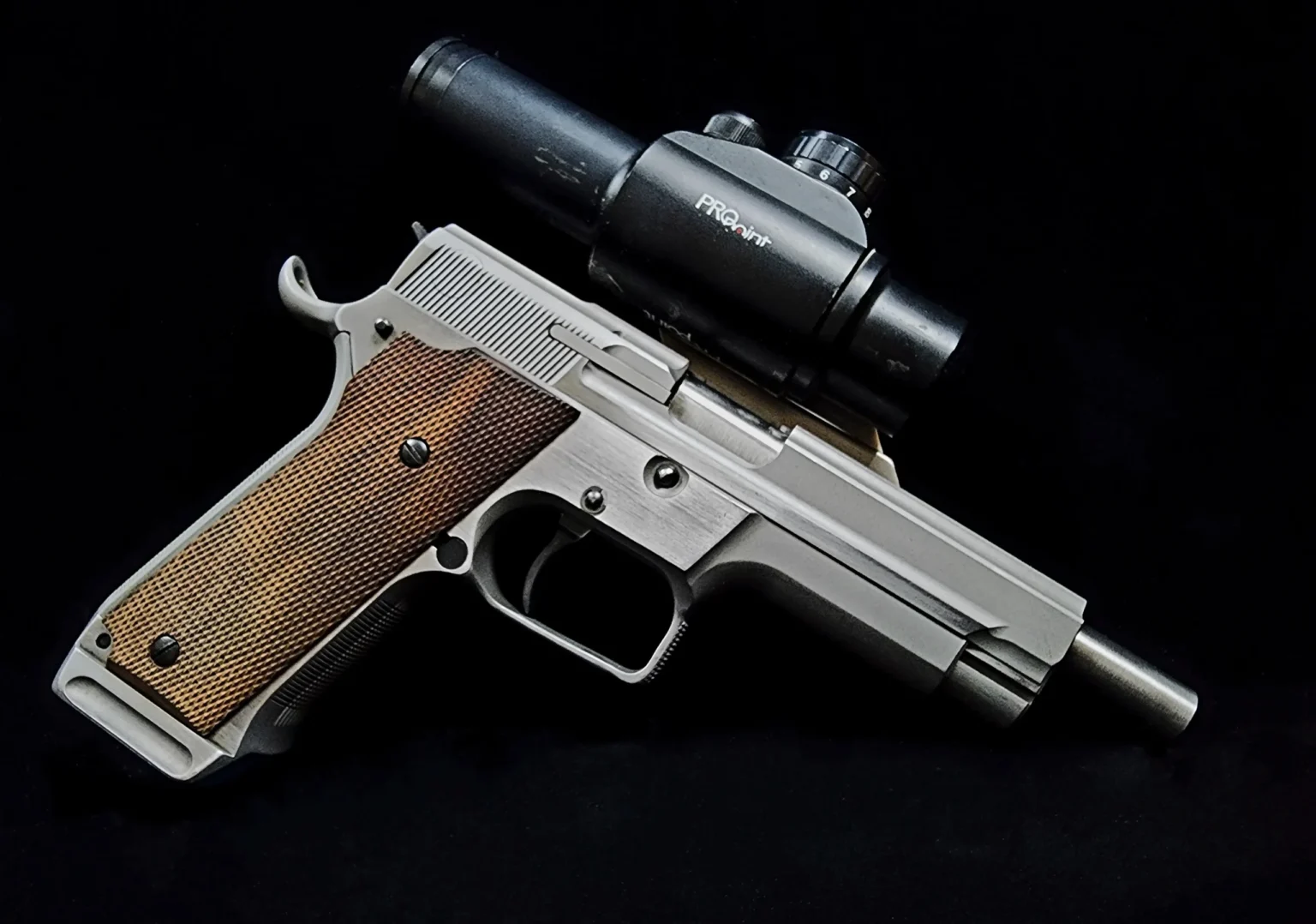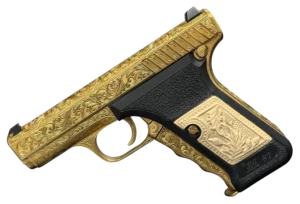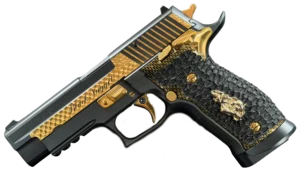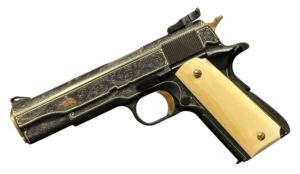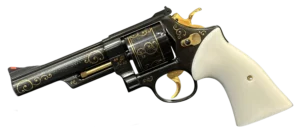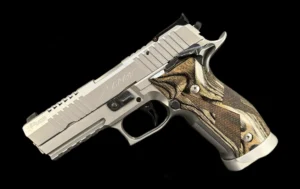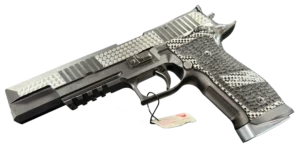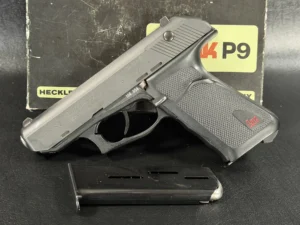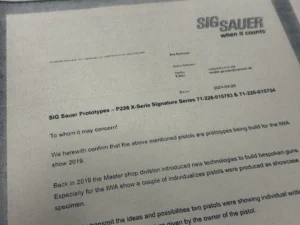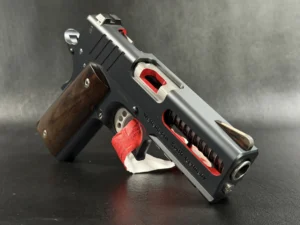Key Takeaways:
- Prototypes aren’t just collectible — they’re the unsung blueprints of firearm history: Every prototype tells a story. Sometimes it’s a dead end, sometimes it’s the origin of an iconic design. Either way, you’re not just holding a rare gun — you’re holding the messy, brilliant process behind innovation.
- Authenticity is everything, but don’t expect it to be simple: Forget clean-cut rules — verifying a prototype is more like solving a puzzle. You’ll need a mix of documents, gut instincts, technical know-how, and, occasionally, someone smarter than you to weigh in.
- The real reward? It’s not about flipping for profit — it’s about the thrill of discovery: Sure, some pieces might skyrocket in value. But collecting prototypes is really about curiosity, connection, and building something personal — a collection that tells a story only you could piece together.
Let’s be honest — the world of firearms is already kind of a rabbit hole. A deep one. You start off admiring a classic revolver or an old military rifle, and next thing you know, you’re staying up at 2 a.m. on obscure forums trying to figure out whether a serial number means “experimental” or just “early production.”
But then there’s this other level — a weirder, rarer, more thrilling level. Prototype firearms.
These are the ghosts of what might’ve been. The testbeds. The design experiments that either made it to production or didn’t. Each one tells a story of invention, trial and error, and sometimes, total failure. And yeah, that makes them incredibly compelling to collect.
But here’s the catch: Collecting prototype guns isn’t simple. There’s history, sure, but also a mess of legal gray areas, questions about authenticity, and the constant risk of buying something that looks cool but turns out to be, well, not what you thought it was.
So let’s unpack it — all of it. The excitement, the red flags, the hidden gems. This isn’t just a how-to guide. It’s more like the honest conversation you’d have over a greasy diner breakfast with a fellow collector who’s been around the block.
First, What Even Is a Prototype Firearm?
Okay, let’s ground ourselves for a second.
A prototype gun is essentially a draft. It’s the first (or one of the first) versions of a firearm design — built to test function, design quirks, maybe even new materials. Sometimes it’s cobbled together with weird parts just to see if something works. Other times, it’s shockingly polished, especially if it was being shown to military brass or execs.
What makes prototypes special is that they live in the space between “idea” and “production.” They’re proof-of-concept. You don’t just hold the final product — you hold the process.
And sure, they’re rare. But more than that, they’re messy, personal, and packed with clues. They show how an idea morphed over time. Or didn’t.
Why They’re So Damn Alluring
Let’s say it out loud: collecting prototypes is kind of addictive.
Why? Because they feel like secrets. Everyone and their cousin has seen a production Glock. But that oddball prototype with the squared-off trigger guard and the weird slide cuts? That’s a story.
Some are tied to famous names — Browning, Kalashnikov, Stoner. You pick up one of their testbed designs, and you’re literally holding their thought process. The hesitations. The what-ifs. It’s personal.
Others never made it to production. They were too expensive. Too ahead of their time. Or they just flopped in military trials. And yet… they existed. Even briefly.
That’s what draws people in. These guns weren’t made to impress — they were made to figure things out.
And weirdly enough, the quirks are what make them great. Odd controls, hand-etched markings, strange grip angles — it’s all part of the charm.
How Do You Know It’s Real?
Here’s where things get dicey.
Prototypes are rare. Which means fakes? Yeah, they’re out there — and they’re not always easy to spot. So if you’re getting serious about collecting, you’ve gotta play detective.
Start with the paperwork. Provenance is gold. We’re talking design notes, factory letters, patent filings, test results, even old correspondence. If someone can back up the story of the gun with documents, that’s a solid start.
Markings matter, but don’t trust them blindly. Some prototypes have unique serials or obscure factory stamps. Others? Barely anything. That’s the thing — markings help, but they’re not a guarantee. And fakers know that.
Build your eye. Learn what an “off” weld looks like. Study grip shapes. Pay attention to weird materials. Some prototypes were one-offs; others were pre-production runs. The more examples you’ve seen, the better your gut gets.
And here’s a hard truth: sometimes you’ll have to walk away. If it feels sketchy, it probably is.
Don’t Sleep on the Tech Details
For all the historical cool factor, let’s not forget: prototypes are where the mechanical magic happens.
They’re the playgrounds for designers to try stuff out — new locking systems, recoil setups, feed mechanisms. Sometimes you’ll find early uses of polymers. Other times it’s hand-machined internals that would’ve cost a fortune to mass-produce.
So, when you’re checking one out, keep an eye on:
- Action type – Is it doing something unconventional with how it cycles?
- Materials – Any signs they were testing alternatives? Unfinished metal? Nonstandard alloys?
- Ergonomics/configuration – Grip angle, controls, sights — how different is it from what eventually hit the market?
- Patents – Seriously, go patent-diving. Sometimes, you’ll find a prototype that’s almost identical to what’s in an old filing. Instant credibility boost.
It’s not just about knowing your stuff — it’s about understanding why that stuff was chosen. What was the designer trying to solve?
Legal Stuff — Not Sexy, But Super Important
Now, not to kill the vibe… but yeah, laws. They matter.
Prototype firearms fall into a peculiar category. Some are legally just “guns.” Others? They might be classified as machine guns or restricted weapons, even if they were never mass-produced.
A few tips:
- Know your local and federal laws. U.S. collectors, that means being on top of NFA regulations. Some prototypes might have full-auto components or short barrels.
- Import restrictions can be brutal. Many prototypes never crossed borders legally. Do your homework before shipping anything.
- Ask about demilled versions. Occasionally, a prototype appears that has been rendered inoperable by legal means. Still collectible — just not shootable.
Also, just because something’s “historical” doesn’t mean it’s legal to own. Be smart, ask questions, and if needed, consult with a firearms attorney who specializes in this area.
Are They Good Investments?
Short answer: sometimes.
Prototype firearms, by their nature, don’t follow normal pricing logic. There’s no “Blue Book” for one-off development models. That means their value is driven by story, rarity, condition, and — sorry — collector hype.
Some factors that tend to boost value:
- Historical significance – Was it part of a known trial? Did it inspire a production gun?
- Designer or brand – If it’s tied to a major figure or company, you’re golden.
- Condition + originality – Has it been altered? Refinished? Is it missing any experimental parts?
That said, don’t collect these just for money. Seriously. The market’s too weird, and the emotional payoff — the thrill of discovery — is way more satisfying.
Collecting With Purpose (And Not Just Grabbing Cool Stuff)
Look, it’s easy to get distracted. You see something odd, your pulse spikes, and suddenly it’s on your shelf.
But the best collections? They have focus.
Some folks zero in on prototypes from one country or manufacturer. Others go after failed military trials. Or Cold War designs. Or oddball blowbacks.
The point is that having a “why” makes collecting more fun — and more meaningful. You start connecting dots, telling stories, and building context. And that’s where the real magic happens.
Finding the Good Stuff (Hint: It’s Not Always Online)
Sure, GunBroker and auction sites can be gold mines. But if you’re serious about this game, you’ll want to get out there.
- Gun shows – Yeah, they can be hit or miss, but now and then you’ll stumble across something special. And talking to sellers in person? Huge advantage.
- Specialized auctions – Places like Rock Island or Morphy’s often acquire prototypes, especially from estate sales or the clearance of old factories.
- Private sales – These are about relationships. The more people you know in the community, the more you hear about stuff before it hits the open market.
- Forums and niche groups – Reddit, Discord, old-school message boards… if you know where to look, there’s a lot of knowledge (and buying opportunities) flying under the radar.
Just remember: trust your gut, ask for documentation, and don’t be afraid to walk away if something doesn’t feel right.
Keep It Safe, Keep It Documented
Prototype guns are delicate creatures. They weren’t always built to last — just to test.
That means you’ve gotta take care of them. Think museum-quality storage:
- Humidity control – Moisture is the enemy. Get a decent dehumidifier or safe with climate control.
- No unnecessary handling – Especially with early prototypes. Oils from your hands? They’re not helping.
- Avoid “fixing” things – A missing screw might bug you, but replacing it could kill authenticity.
And for the love of all things collectible: document your stuff. Photos. Notes. Histories. Provenance.
You’re not just preserving the gun — you’re preserving the story.
Final Thoughts: Why This Matters
Collecting prototype firearms isn’t about having the biggest safe or the shiniest finish. It’s about curiosity. About catching glimpses of the creative chaos that happens before something becomes iconic.
These guns weren’t made to be pretty. They were made to push boundaries. Sometimes they succeeded. Sometimes they didn’t. But every one of them has something to say — about design, about history, about what could’ve been.
So yeah, it’s niche. Maybe even a little nerdy.
But if you’ve read this far, you’re probably already in too deep.
And honestly? That’s a great place to be.
Happy hunting.
Frequently Asked Questions
Think of it as a draft — a test model built to try out a new design, feature, or material. Some are cobbled together in a shop using whatever parts are available. Others are polished enough to impress military brass. If it came before production — and helped shape what came after — it probably counts.
Short answer: paperwork helps. Long answer: it’s a mix of documentation (blueprints, letters, factory records), markings (if any), and experience. The more prototypes you see, the more your BS radar improves. And yeah — sometimes you’ve gotta phone a friend who’s deeper in the weeds.
It depends. Some are fine under federal and state law. Others? Not so much — mainly if they include full-auto features or fall under NFA restrictions. Always check local laws, and if anything seems unclear, consult with someone who has a thorough understanding of firearms law. Seriously.
Sometimes! A few saw limited use in field testing, usually in military trials. Others were shot a bunch in labs or test ranges and never left the bench. Either way, that use of history can add an extra layer of cool and value.
Not always, but often. Rarity drives prices, especially if there’s a story, a famous designer, or strong provenance behind it. That said, you can still stumble across oddball prototypes that aren’t on anyone’s radar yet. Keep your ears open and your budget flexible.


